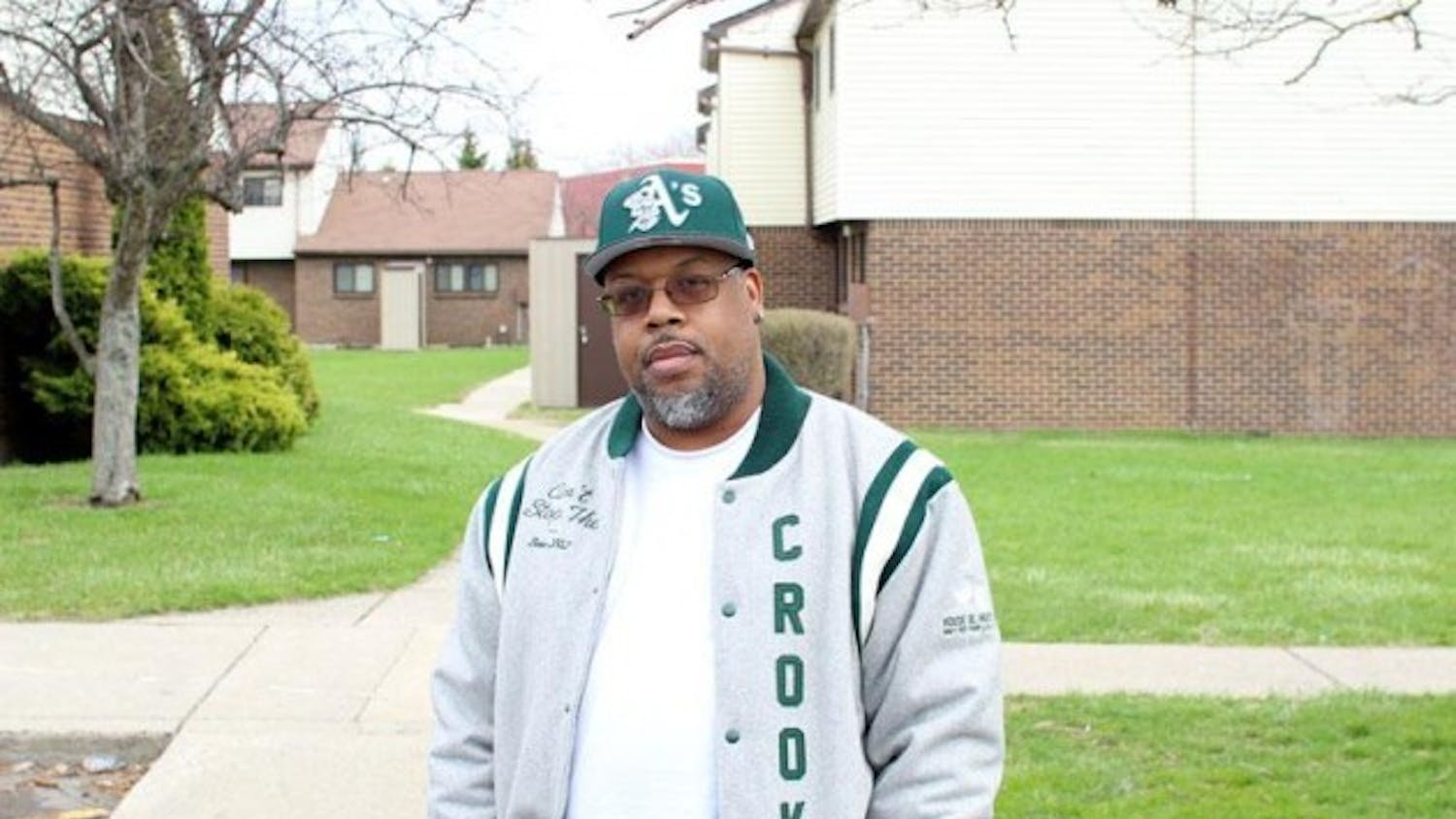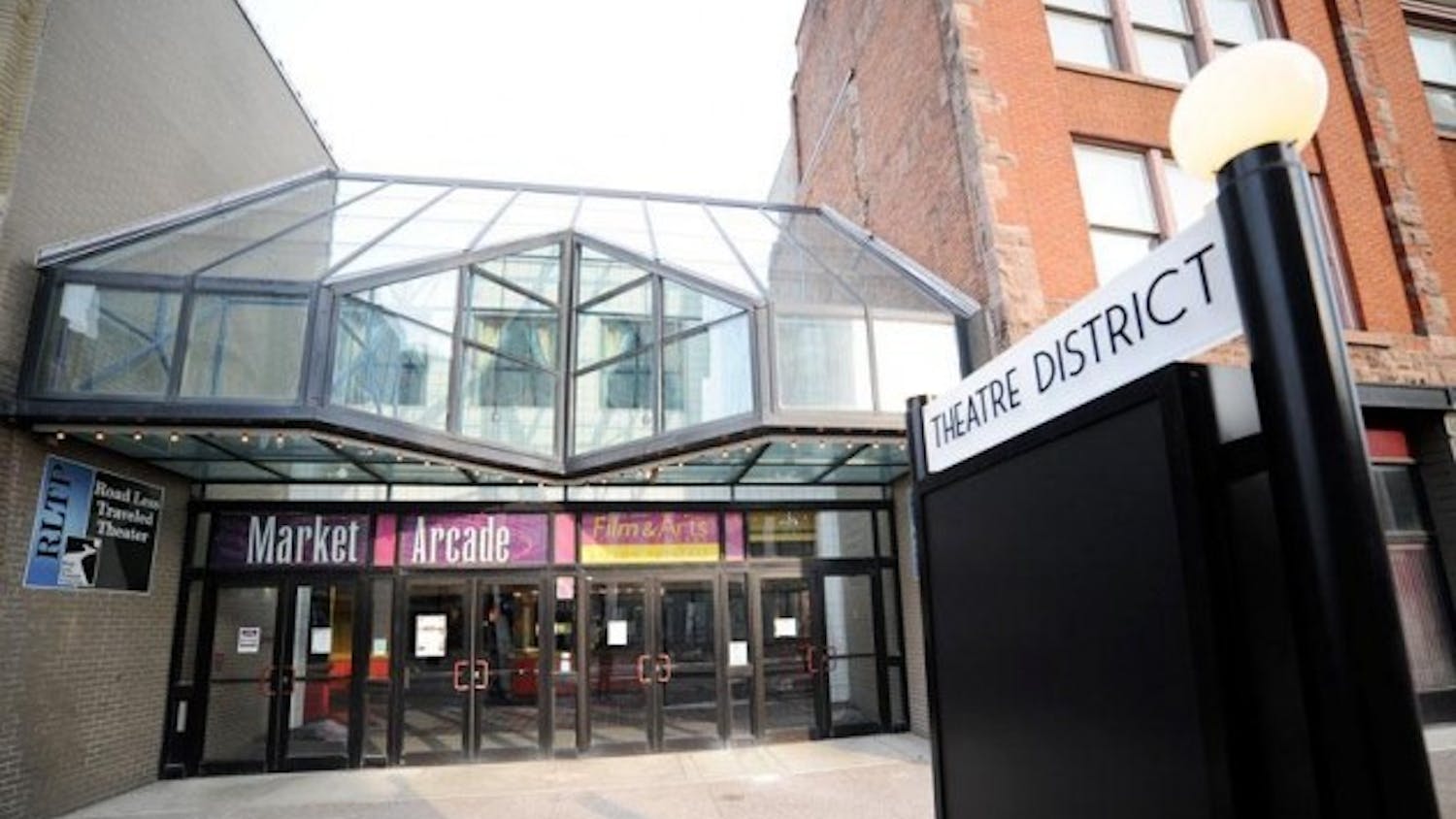Jordan Geiger creates more than just buildings.
As an assistant professor of architecture in the Center for Architecture and Situated Technologies (CAST) in UB's School of Architecture and Planning, Geiger is using architecture to help young immigrant and refugee children understand their own individual journeys of migration.
"There was a time, maybe, that architecture was designed to shape a building," Geiger said. "But now architects can build many things that affect our beliefs and our built environment, and there are many different ways to participate."
Geiger is planning to relaunch one of his biggest projects, "Beau-Fleuve (You Are Here)," an interactive architecture installation inspired by the legend that Buffalo's name comes from the French words for "beautiful river."
Some people believe the name stems from French settlers who came to the area and called the Niagara River "beautiful," according to Geiger. The British heard the French phrase and misunderstood it and said "buffalo" instead, he said.
"Beau-Fleuve" is 15-foot tube made of felt and embedded with speakers and microphones. As children crawl through the tunnel, they can touch sensors and trigger the microphones, which talk to them and ask them to talk about themselves. The children, in turn, explore their own histories through the help of the structure.
"I like to explore the ways that architecture relates to the rest of the world, being it culture, technology or society," Geiger said. "It's not just about buildings, but how we live in it."
The Manhattan native explored his own innovative path through his studies. Geiger earned his undergraduate degree in comparative literature - studying literature in Italian, French and English - from UC Berkeley in California, but he became interested in architecture while in school. After graduation, he earned a Master's in architecture from Columbia University in New York City.
Geiger was inspired by a project by Diller-Scofidio, an interdisciplinary design studio in New York City that combines architecture, visual arts and performing arts in its projects, he said; it led to his interest in architecture as a field of study.
"It was really fulfilling," he said. "I had worked for other architects for many years, and I decided I wanted to go on my own. That was the start of exploring my own interests more than before."
Geiger worked in many different architectural studios and he created his own studio, Ga-Ga, in 2002, which was based in California.Ga-Ga, in turn, has produced its own installation, gallery and urban design projects, which have been exhibited and published at the American Institute of Architects in 2005 and the ZeroOne Festival in 2008.
Geiger closed Ga-Ga in 2009 and continued his architecture journey and came to Buffalo for a professor position. He said moving to Buffalo gave him the opportunity to learn how architecture could be used with different fields of studies, such as computer human interaction, to analyze social and environmental issues.
Geiger currently works as an assistant professor at CAST and teaches undergraduate design studios, such as "LifeCycles," and graduate design studios, such as "Felt," which centers on soft structures made digitally from fabric. He also teaches history and theory seminars, such as "Zero Atmosphere Architecture," which is about spaceships, and "Orders of Magnitude," which centers on global computer networks and architecture.
Omar Khan, an associate professor and chair of the department of architecture and one of Geiger's colleagues, said Geiger's work is a great asset to CAST due to his ability to think big. Khan said he's an excellent organizer, especially with finding how technology intersects with large organizations.
Nima Vakili, a second-year graduate student in the Department of Architecture and Department of Media Study and one of Geiger's former students, discussed how Geiger worked with his students on an equal level, without hierarchy playing a factor in his relationships with his students.
"He himself embraces any opportunity to learn new things," Vakili said in an email. "Sometimes, he attends workshops if he feels that he can learn something new. Once, I brought an idea (borrowed from another discipline) and discussed it with him, and he was surprised and said that it was really interesting, and I should start working on it."
Geiger's upcoming projects include a book of essays called "Entr'acte," which is about digital media and public space, and a conference called "MediaCities" for May 2013, which is about cities and digital media. Geiger plans to co-organize the conference with colleagues Khan and Mark Shepard, an associate professor in the school of architecture. He also plans to open an exhibition of his design work, called "Very Large Organizations," at the WUHO gallery in Los Angeles, Calif. this April.
Outside of his design work, Geiger enjoys using his free time to travel Buffalo and getting to know the Great Lakes Region and learn about the area - his inspiration for the "Beau Fleuve" project.
Geiger believes there are more careers in architecture than ever before - aspiring students should find the path that's right for them, whether it focuses on buildings, material research or academics.
His journey began as a college student and the opportunities to explore as an architect were endless. Geiger believes the same is true today.
Email: news@ubspectrum.com
Editor's note: Corrections to this story were made on March 11, 2013.




